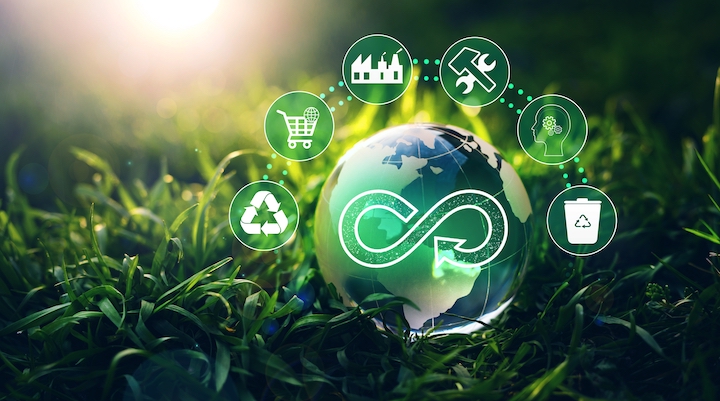Author: Editorial board

Circular economy: the sustainability of home appliances
The home appliance industry consumes a large amount of raw materials, energy and resources that have a significant impact on the environment at every stage of the appliance life cycle: from the extraction of materials, to processing, production, transport, up to the end of its use.
How can the impact of production processes be progressively reduced? The home appliance sector can be seen as a forerunner in the initiation of a circular economy model. Today, home appliance manufacturers are committed to sustainability by designing appliances that are increasingly energy and resource-efficient, durable and repairable in order to reduce waste. In this article, we take a closer look at the circular economy in household appliances.
More specifically we will be talking about:
Click on the button below and download the brochure dedicated to electromechanical components and light signaling for the HoReCa sector, professional coffee machines, and professional appliances.
Circular economy in household appliances
In the current context, where environmental sustainability has become a global priority, the adoption of practices and products that promote the circular economy has taken on a prominent role. In particular, attention is focusing on household appliances, essential elements of modern life that significantly influence environmental impact. Examining how to make these devices more sustainable is crucial for promoting an eco-friendly lifestyle and reducing waste accumulation. But what is meant by the circular economy? The term circular economy refers to a production and consumption model based on 5 principles: reduce, repair, refurbish, recycle and resell.
Following these principles, a product that has reached the end of its life cycle will be broken down into its different parts, which will be expertly recycled and brought to life in a new production cycle. In this way, components and materials can be reused, generating new value.
Applying this model means aiming for the extension of a product's life cycle: reducing the amount of waste and CO2 emissions resulting from the disposal of discarded appliances are the main drivers of this virtuous cycle.
The circular model contrasts the traditional linear economic model, which follows the "extract, produce, use and throw away" pattern. The linear model depends on the availability of large quantities of raw materials and resources, which today, with the sensitive issue of material scarcity, is very limited. Rational use of these has an impact on the reduction of CO2 emissions and can contribute to the achievement of the Cop26 goals.
The transition from a linear to a circular economy is in fact a change that involves everyone: from the individual citizen to the industrial organisation, to society at any level (local, national and global). Even appliance manufacturers are called upon to spread the culture of the circular economy by pursuing a circular process: starting with the use of resources and materials, they are called upon on the one hand to pursue energy efficiency and, on the other hand, to support technological progress by designing innovative products.

Sustainable economy and household appliances
The home appliance industry appears to be one of the markets most sensitive to sustainability issues. From a sustainability perspective, one cannot only refer to the energy efficiency of the latest home appliances. The energy labelling regulations are the first step into the future: for truly sustainable development, it is necessary to go further. A regulation on extended producer responsibility, with minimum requirements on product sustainability and measurement of material production processes is needed.
In March 2022, the European Commission, with the Sustainable Product Policy initiative (Spi), presented a first package of proposals - Ecodesign and Energy Labelling Working Plan 2022-2024 - to accelerate the transition to a circular economy, pushing the industry towards a market of devices with a longer life cycle. The Ecodesign for Sustainable Products Regulation (ESPR), in fact, outlines new requirements for device manufacturers to make their products more durable, reliable, reusable, repairable and recyclable, as well as more energy efficient.
In this sense, technological innovation and digitization play a fundamental role in optimizing appliance efficiency and reducing their environmental impact. Smart devices and IoT connectivity enable more precise control of energy consumption and facilitate preventive maintenance, thereby extending the lifespan of products
Would you like to keep up-to-date with the latest news on SLIM and light-signalling products? Click on the button below and subscribe to our newsletter!
